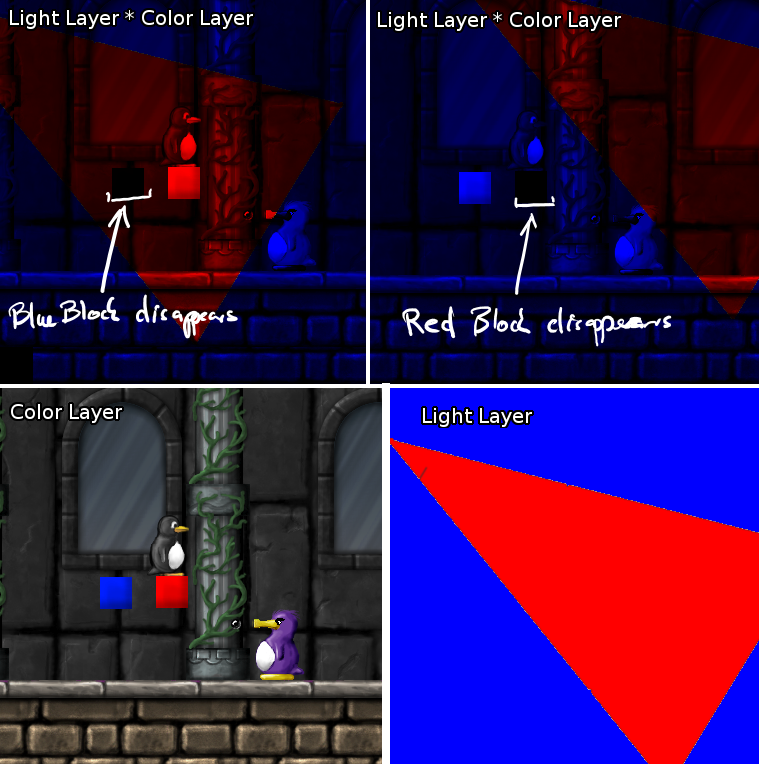-
-
Notifications
You must be signed in to change notification settings - Fork 484
Lighting

Lighting is a post-processing effect that can be used to add athmosphere to a SuperTux level, it works by darkening parts of the screen.
To accomplish this effect the game uses two layers for drawing, the
color layer is used for regular drawing, while the light layer is
used to draw objects to the lightmap. The lightmap layer is drawn to a
separate texture and drawn over the color layer with multiplicative
blending, the final pixel color is thus:
framebuffer = (color * light)
The color layer itself does not exist as a separate texture, but only
implicitly. The lightmap is drawn over framebuffer when drawing
objects from the color layer passes z-pos == LIGHTMAP_LAYER. All
color objects above that z-pos will not be affected by lighting
effects, which is useful for GUI elements, but can also be used to
create lens flares effects and brightly glowing objects.
To create said lens flares add objects to the color layer with a z-pos bigger than LIGHTMAP_LAYER and set their blend mode to additive.
While lighting is primarily just for visuals, game objects can also react to lighting changes, this is done by doing a lookup of pixel color on the lightmap.

The idea behind magic lighting is that an object which only uses colors from a single color channel, say only the red one, turn completly black when illuminated by a light source that only contains colors of the other channels (blue and green).

This also works with multiple color channels at once, meaning a magenta (1,0,1) colored light will make both red and blue objects visible, while hiding green ones, while a green light will make red and blue objects disapear.

Since its very hard to actually see where a light source is located on a dark background, the highlight layer should be a copy of the light layer, thus illuminating the level better and making the light sectors visible.
Home
Guidelines
Game Mechanics
Tools
Engine
- Cameras in other games
- Collision
- Configuration File
- Console
- Cutscenes
- Game_Engine
- Lighting
- Map_transformer
- Portables
- SceneGraph
- Scripting
Specifications
Milestones
- Milestone 1 Analysis
- Milestone 2 Design Document
- Milestone 2 Design Document Old
- Milestone 3 Design Document
Building (mostly outdated)
- INSTALL.md
- Building
- Building on macOS
- Building SuperTux
- Building on Windows
- Building with MXE (cross-compile)
Meetings